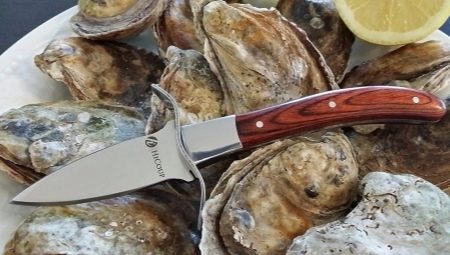Shellfish are one of the most common types of delicacies. They have an interesting taste and the presence of a large number of micronutrients. One of the most popular types of mollusks is oyster. This mollusk is rich in proteins, carbohydrates, as well as many vitamins, phosphorus, zinc and other beneficial substances.
But in order to get to the meat of this mollusk, you need to have a certain skill, as well as the necessary devices. There is nothing complicated, the devices are knives. But which ones are more suitable and useful to you, let's try to make out in this article.
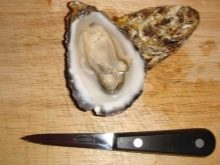

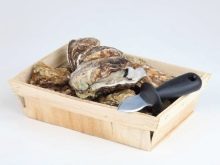
Description and features of oysters
For many millennia, oysters occupy one of the main positions in the list of delicious dishes. These mollusks are attractive in appearance because they have a shell that looks like a shell.
Almost all known species of mollusks are warm-water. A comfortable environment for them from 20 degrees of heat. True, known species that survive well at temperatures below 0 degrees Celsius. The average salinity of the water is about 40%, and the depth is about 4 meters.
Oysters are not the cheapest pleasure. On average, the cost per 1 kg is 1000 rubles. The price of oysters in restaurants can reach 600 rubles per piece. But there, most often, mollusks are served already open or they can be opened right in front of you.
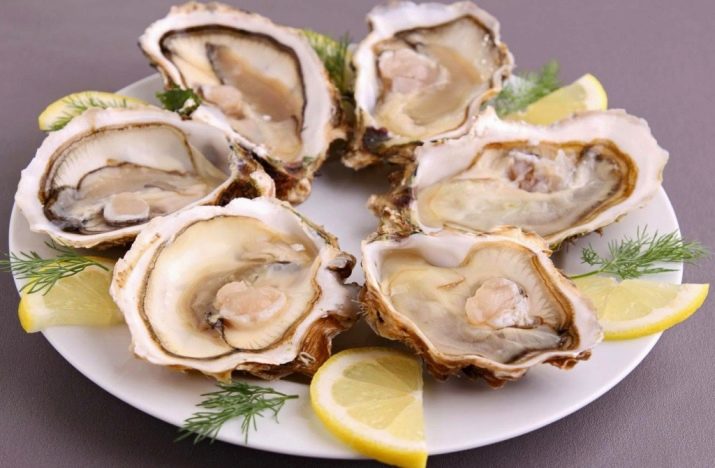
Oyster opening devices
But what to do at home if you decide to arrange a gala dinner with such a curiosity, but you don’t understand the autopsy devices?
Oysters are eaten in one or two steps, but the preparation, and most importantly, the opening, is a difficult, but doable task. To do this, you need a special oyster knife.The most interesting thing is that progress has gone so far forward that for each type of mollusk, including oysters, its own kind of knife is intended.
But knives are not only important. Tongs, a special fork and a plate are also served.
Several types of knives are most often used to cut oyster shells.
- Boston. Blade-like knife. It has the smallest size compared to other specialized tools. Not always, but in some cases has teeth. It is used for small species of oysters and other mollusks. Very durable, since the oyster has a fairly hard shell that a regular knife will not take.

- Chispicki. Differs from the Boston size. It has an oblong shape and tapers towards the end. The wide handle is made for easy opening of medium mollusks.
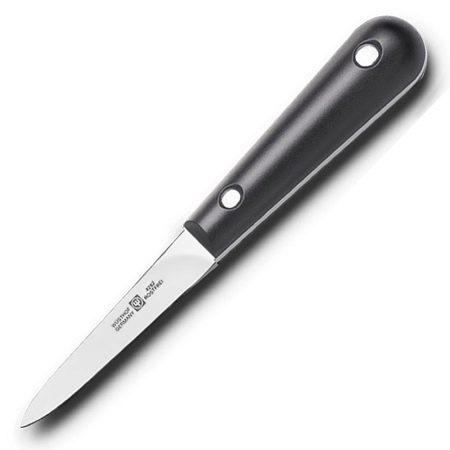
- Galveston. The biggest seafood opens with just such a knife. It has a very comfortable shape and is sharp in itself. The thick blade and wide handle help open even complex sinks without unnecessary damage.

How to open an oyster with a special knife?
To start, the sink itself needs to be thoroughly rinsed. There should not be traces of algae or excess dirt on it. To do this, it is better to take a brush or sponge and clean the sink from above.
The next step is to remove excess moisture from the sink.
If you skip this step, the sink may either fall out of your hands, or the knife may slip and injure you in the process. It is enough to get the product wet with a napkin.
If you get wet with a towel, then leave the oyster in it. This will be an essential safety feature. Insert it so that your hand is closed and the sink itself is in a stable position.
Lean the oyster on the table, but do not press too hard so as not to crush it.
Since the oyster is a bivalve creature, we insert the tip of the knife between the two leaves and very carefully drive it until a small clearance is formed.
The shell flaps hold back the muscle. With a knife, you need to cut it so that the sink can open. This must be done as carefully as possible without touching the body itself.
After the leaves have opened, the top cover must be torn from the bottom without pouring the juice that covers the meat. The case is done, you can serve the guests.
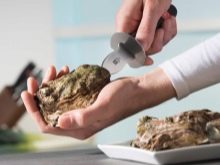
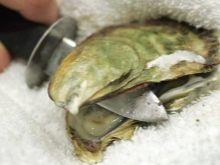
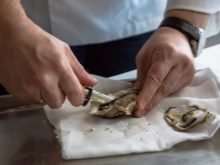
What should not be forgotten?
There are some rules, following which you can serve delicious delicacies to the table.
- Be sure to rinse the sink clean. In its folds, sand and algae accumulate. After opening the shell, they can get on the meat.
- Never take a clam with a crack and at least a little uncovered. Most likely, these are already dead mollusks that are of no value, and their use in raw form is prohibited.
- After opening the oysters can be put in a container with iceso that they do not lose their refined taste.
- There are situations when there is no special knife at hand, and it is necessary to open the sink. There is one little trick. In such emergency cases, a simple lemon will come to the rescue. You need to squeeze his juice. Take the oyster and swing it upside down. Take half a lemon and pour oyster on it. As the mollusks react to acid, the oyster begins to open before your eyes. It may take several minutes, but if it opens, it means it is fresh and can be eaten without any risk to health.
If the oyster remains closed and after 10 minutes, throw it out. Inside, the mollusk is dead, and this is neither raw nor baked.
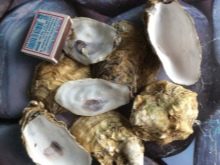
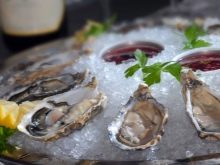
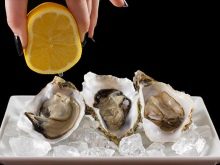
Correctly open the oyster will help the following instructions.
